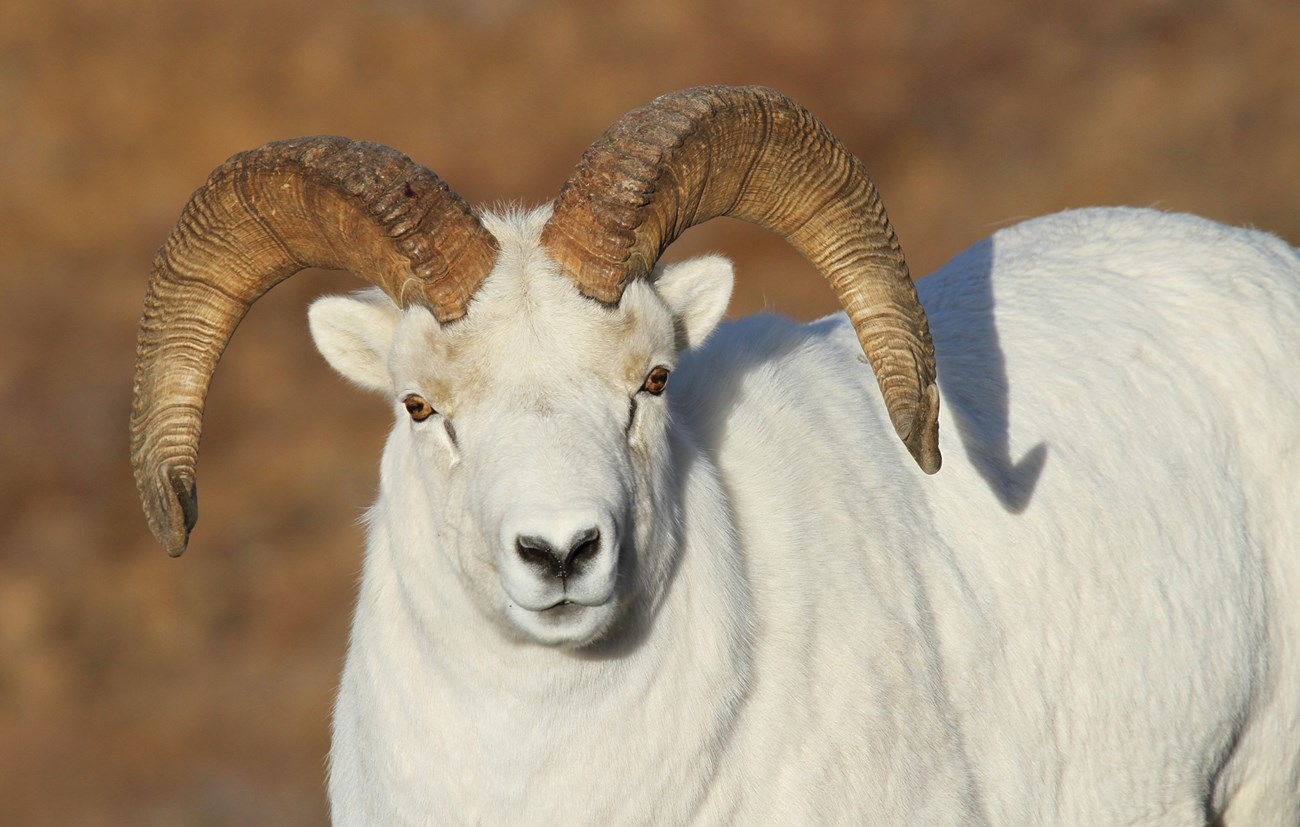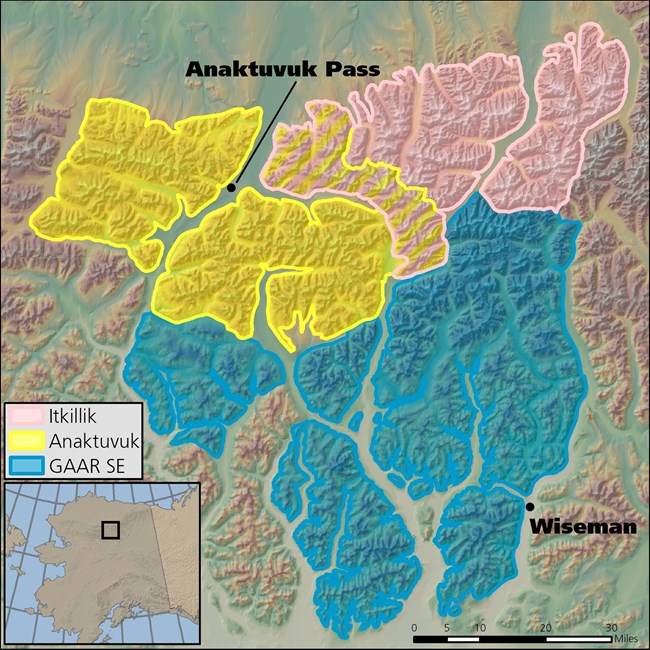
NPS/Jared Hughey Dall's sheep are an alpine adapted species at their northernmost extent in the Brooks Range. They live on rocky peaks that protect them from most predators. Dall's sheep feed on green grass and sedges in summer, and in the winter they search for slopes where the wind has blown the snow off lichens and dried or frozen grasses. Dependent on rugged escape terrain and available forage in the sparsely vegetated alpine, Dall's sheep are susceptible to fluctuations in weather and highly sensitive to local environmental conditions. Because of this sensitivity, and the fact that they don't migrate makes Dall's sheep good indicators of ecosystem health. Dall's sheep are a valuable harvested species. Local residents can hunt sheep for subsistence throughout Gates of the Arctic, and non-local residents from Alaska and elsewhere can hunt sheep in the Itkillik Preserve, in the northeastern portion of the park unit. Widespread and dramatic declines in sheep numbers were observed in the early 1990s following several severe winters of higher than average snow fall and icing events that likely increased vulnerability to predation and decreased access to food sources. While some populations appear to be recovering, regional numbers remain lower than were seen in the 1980s. The NPS has developed new aerial survey methods to monitor population trends in Gates of the Arctic and five other parks in Alaska. The NPS will also collect fecal pellets and vegetation for analysis of diet composition and forage quality. These methods are critical in understanding how to conserve Dall sheep and subsistence opportunities. Dall's Sheep is a "Vital Sign" for the Arctic Network Inventory and Monitoring Program (ARCN). Information gathered from this long term monitoring effort will be used to:

2022 Survey SummaryBackgroundThe National Park Service conducted an aerial survey for Dall's sheep July 6th-16th, 2022. Three aircraft based out of Galbraith Lake and Coldfoot surveyed two different survey areas in Gates of the Arctic Park and Preserve (GAAR): Itkillik and Southeast Gates of the Arctic Park. The Anaktuvuk survey area was not completed due to poor weather. The survey used a standardized distance sampling protocol. Accurate Dall's sheep abundance and demographic data are critical for sustainable management of Dall's sheep populations and their harvest. 
The Itkillik and Anaktuvuk populations crashed after difficult winter and spring weather in 2013/2014. Since then, the Itkillik population has remained low and stable, while the Anaktuvuk population has climbed slowly. The sheep populations in Southeastern GAAR, which are surveyed less frequently, have experienced a large decline since 2015. The estimated number of adult sheep has fallen from 1,969 (95% Bayesian Credible Interval: 1805—2189) in 2015 to 766 (95% BCI 583—1067) in 2022, a 61% decline. The number of lambs per ewe-like sheep, an indicator of reproductive success, has varied greatly across survey areas and years. Reproductive success in 2022 appeared to be above average in the Itkillik survey areas and average in the SE GAAR survey area. 
Contact Mat Sorum, Gates of the Arctic sheep and bear biologist Email: e-mail us https://www.nps.gov/im/arcn/dallsheep.htm Related Pages |
Last updated: June 27, 2024
